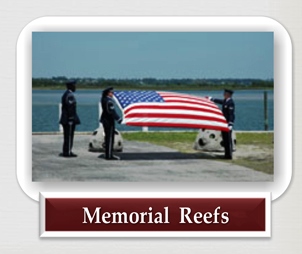What to Do After a Death
What Should You Do After the Death of a Love One?
125 Tasks After a Death Has Occurred

A. Secure Vital Statistics
- Full legal name, address, telephone number, and email address
- Religious name (if any)
- Date of birth
- Place of birth
- Marital status
- Name of spouse (if married)
- Spouse’s maiden name (if wife)
- Educational attainment
- Citizenship
- Father’s full legal name
- Father’s birthplace
- Mother’s name and maiden name
- Mother’s birthplace
- Full names, phone numbers, and addresses of all children, grandchildren, and/or great-grandchildren
- Acquire Social security number
- Obtain Veteran’s serial/service number
- Determine date and place of military service
- Date of military discharge
- Research how long at current residence and former residence(s)
- Occupation, job title, nature of work, and employment history
- Workplace name, address, phone number, and email address
- Ensure family origin
B. Pay Some or All of the Following
- Estate/Inheritance taxes
- Funeral and burial costs
- Purchase a family cemetery burial plot, estate, mausoleum, crypt, cremation niche, or other
- Permanent resting place
- Monument and marker engraving details
- Funeral Director
- Clergy
- Organist and vocalist
- Funeral Flowers
- Obituary
- Clothing preferences
- Long distance telephone service
- Food
- Transportation and removal costs
- Doctors
- Nurses
- Medical practitioners
- Ambulance
- Hospital or nursing home
- List of all medications and drugs
- Current and urgent bills (mortgage/rent, taxes, car payments, debts, utilities, etc.)
C. Collect Documents and Paperwork
- Last Will (check to see if any final wishes were specified)
- Prepare legal papers, death certificates, state permits
- Birth certificates and/or any legal forms of proof of age
- Citizenship papers
- Social Security card or number
- Marriage license
- Veteran’s discharge certificate
- Submit all insurance policies (life, funeral/burial, health, long-term care, etc.) and also necessary government forms
- Disability claims
- Bank books and listing of all accounts
- Records of other financial documents (outside of bank)
- Property deeds
- Cemetery deed or proof of ownership
- Auto titles or bill of sale
- Income tax returns, receipts, and cancelled checks
D. Decide and Arrange Within a Few Hours
- Make cemetery arrangements
- Secure interment space and location of burial disposition
- Arrange for opening and closing of the grave/mausoleum/crypt/estate/niche space
- Secure endowment care
- Arrange graveside committal service
- Secure use of cemetery chapel for committal prayers
- Decide on embalming and other preparations of the deceased
- Choose restorative art
- Funeral Home preference
- Location of funeral service
- Service type (religious, fraternal, military, etc.)
- Time and place of visitation and funeral service
- Arrange any special religious services
- Choose person and provide information for funeral eulogy
- Select from casket (open or closed?)
- Select outer burial container and/or burial vaults
- Select cremation urn and niche space (if cremation)
- Provide vital statistics of deceased for the newspaper obituary
- Choose clothing for the deceased
- Choose jewelry and glasses for the deceased
- Select cosmetology and hairdressing for deceased
- Selection of Scripture, readings, poems, etc.
- Choose preferred clergy to officiate
- Marking of grave (either temporary or permanent)
- Select memorial market/monument setting and inscription
- Select charitable contributions in memory of the deceased
- Register book, memorial/prayer cards
- Select pallbearers
- Floral arrangements and transportation (before and after)
- Select funeral music
- Organist, pianist, vocalist
- Arrange for funeral coach
- Arrange for limousine for family and pallbearers
- Arrange funeral car list for family and guests
- Clothing for you and children
- Decide who will look after children and/or pets
- House cleaning
- Extra chairs
- Transportation for family and guests
- Review and sign all paperwork (burial permits, etc.)
- Answer innumerable phone calls, emails, letters, and visitors
- Meet with Funeral Director, Cemetery Director, clergy, lawyer, CPA, financial advisor, insurance agent, etc.
- Arrange transportation and lodging for out-of-town guests
- Acknowledge and thank those who help in a special way (flowers, food, donations, etc.)
- Decide how many certified copies of death certificates to order
- Food for family and out-of-town relatives and guests
- Items for memento display and/or memorial board
- Decide on memorial video tribute production, pictures, music
- Arrange for writing thank you notes
E. Plan to Notify ASAP
- All family members
- All relatives
- All friends
- Minister and church
- Funeral Director
- Pallbearers
- Cemetery
- Doctor
- Employer of deceased
- Employers of relatives not going to work
- Organist, musicians, and vocalists
- Newspapers regarding obituary notices
- Social Security Administration
- Veterans Administration
- Insurance Agents and Financial Advisors
- Religious, fraternal, civic organizations and unions
- Attorney, accountant, financial planner, and executor of estate
- Credit card companies, mortgages, utility bills, etc.










